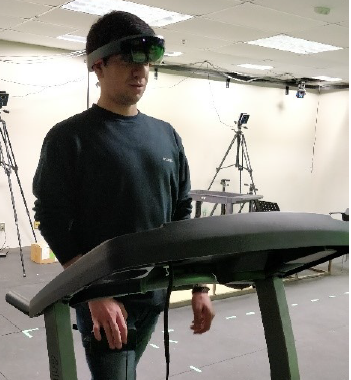About Human-Computer Interaction
Human-Computer Interaction (HCI) involves the design, evaluation and implementation of interactive computing systems for human use, and the study of major phenomena surrounding them. Some research areas focus primarily on the human aspects while others focus primarily on the technical aspects.

The human aspects include cognitive psychology, human factors, ergonomics, social psychology, organizational psychology, and studies relating to the effects of ageing. In addition, the human aspects of HCI include sociology and anthropology, especially research regarding the impact of technology and technological factors on society as a whole. Several areas in the study of commerce, such as consumer behaviour, knowledge management, and especially information systems, also contribute to HCI. HCI draws upon research from many fields, such as architecture and design, literature, music, theatre and film, and cultural and media theory, to not only explore the aesthetic, affective, and semiotic dimensions of new media and technologies but to also explore the symbolic traces they leave on our built environment, individual subjectivities, and communities. The HCI degree reflects this diversity and covers a range of human involvement, from the individual at the base, to groups, to organizations, such as business and human culture in general.
Other disciplines focus primarily on the technical aspects. Aspects that include computer and system engineering, especially engineering for direct human use, digital signal processing for communications, human factors and ergonomics, and engineering of safety systems are all relevant. In addition, software engineering and computer science involve software development processes, requirements analysis, prototyping, user interface design, web technology, computer graphics, computer modelling, and computer security. This involves HCI because it supports the implementation of design, and developers are also users, and their processes and tools need improvement.

Human and technology aspects are linked together in various disciplines that address the application of technology for some specific human ends. These disciplines, such as industrial design and architecture, are involved because they stress the relationship between human use and technology as information and communications technology increasingly feature in the nature of their subject matter. These disciplines all focus on the skill of applying traditional design principles to two- and three-dimensional (virtual or physical) environments, artifacts, and sensory-rich (visual, auditory, haptic, etc.) interaction.
This range of contributing disciplines includes the large and concrete scale of architecture, the human scale of industrial design, multimedia, and new media such as ubiquitous or locative media. Another disciplinary example is cartography because it has long concerned the human qualities in understanding and facilitating work in the earth sciences.
History of HCI at Carleton
Carleton was one of the first universities to embrace HCI. In 1978, the CURE (Computer User Research & Evaluation) Lab was founded by Professors Dick Dillon, Jo Wood, and Warren Thorngate. The three founders were frustrated with computer systems that wouldn’t do what they wanted them to do. While writing their own programs to support their research in human memory, animal studies, and social psychology, they began to also teach HCI through the Department of Psychology.

Land being developed where Herzberg Building would eventually be built
Their courses soon became very popular with the local IT industry, notably with the Bell-Northern Research Labs. At its peak, Bell-Northern employed around 250 Industrial Designers, Human Factor scientists, and HCI specialists. The close connection with our local IT industry culminated in the creation of an NSERC Industry Research Chair in 2000, and then in the re-naming of the CURE lab to the Human-Oriented Technology Lab (HOTLab).
HCI is by its very nature multidisciplinary, so we realized that it needed a home that did not exclusively focus on psychology. Therefore, it made sense to establish a degree that recognizes the multidisciplinary character of HCI and enables us to collaborate more formally in some of the many fascinating research projects that already span many Schools, Departments, and Faculties at Carleton. All of our colleagues participating in the new HCI Master’s degree are doing research that ties into the relationship of Human-Computer Interaction.
